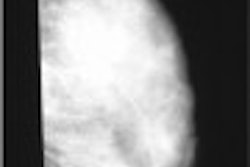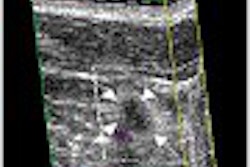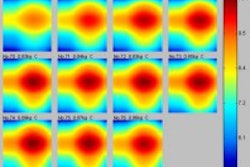Editorial Opinion by Gerald R. Kolb, JD
Recent news and comment about the upcoming reauthorization of the Mammography Quality Standards Act (MQSA) is causing both fear and hope. The fear, of course, is that further regulation will create unsustainable burdens on mammography providers, while the hope is that there will be some legislative "magic bullet" that will reduce the false-negative rate for mammography.
With increasing understanding that screening mammography is reducing the mortality rate from breast cancer, and with increasing numbers of women receiving regular screening mammograms, one thing is certain: Whatever we do must be evidence-based, and must not materially affect patient access in an adverse manner.
Any mammography screening system is a compromise between quality and access. Just as it is possible to achieve perfect sensitivity only at the cost of specificity, or perfect specificity at the cost of sensitivity, any effort that addresses quality without considering the impact on access will have serious, if unintended, consequences.
One can argue, of course, that not all cases of delayed diagnosis are the result of lapses in interpretation, and that the "retrospectoscope" will always find cancer more readily than prospective reading. Notwithstanding these facts, approximately 20% of mammographically determinable cancers are missed, and this performance gap needs to be the subject of serious attention. The balance of this editorial will set out the author’s thoughts regarding a few evidence-based changes to the MQSA legislation that could be expected to improve interpretive quality, without adversely impacting access.
Access is critical. With radiologists in high demand, breast fellowships going unfilled, and the number of MQSA-certified sites already in decline, further requirements should be designed to minimize the additional burden on sites and certified physicians to avoid the creation of a negative incentive for providing mammography. Each of the following recommendations should impose minimum increased burdens on sites and certified providers, while maximizing opportunities to enhance the quality of interpretation.
Create a meaningful CME requirement
To discover mammographically detectible cancers, one must know what cancers look like. This may seem intuitive, but the incidence of breast cancer in a screening population is so low that a radiologist reading at MQSA minimums will have the opportunity to see only 2-3 cancers per year. Requiring large radiologists to see a larger volume of cases may help somewhat, but will predictably impact care in rural areas and thereby impact access.
An alternative is to require more and different CME for certification. Mentored review of mammograms of biopsy-proven cancers and followed benign cases, combined with self-testing and supportive coursework, has been found to be highly effective in prospectively increasing the cancer detection rate for interpreting physicians.
Such courses are of greater duration than MQSA currently requires, and particularly for low-volume readers, should probably be attended more frequently than every three years, which is the current requirement. A requirement of 24 hours of focused CME, containing instruction, mentored review of not less than 100 teaching cases, and self-testing, which is repeated every 24 months, should not provide a significant additional burden on interpreting physicians, and could be expected to provide measurable improvement in interpretive quality.
Audit the audit
MQSA currently requires each certified site to perform an annual medical outcomes audit. Unfortunately, there is no guidance for inspectors with regard to reviewing the results of that audit, with respect to its content. There is also no guidance regarding permissible ranges for outcomes, and enforcement provisions that might encourage the utilization of the medical outcomes audit to promote quality improvement.
While many MQSA sites are using the medical outcomes audit as intended -- to improve quality -- the utility of this provision needs to become more uniform. That will require the establishment of further guidelines for practices (e.g., requirement for quality improvement plans, etc.), and will give the inspector the authority to act in a definable and predictable manner when he or she finds deficiencies in the content of the audit.
Collect the audit information
Much of the information currently being collected on a site-by-site basis, as a part of the annual medical outcomes audit, is not patient-specific. This information could form the basis for a national mammography database. Requiring the use of BI-RADS classification for all mammograms, and submission of certain practice numbers, could provide valuable information concerning practice performance.
I am not suggesting the reporting of false negatives, or other information that might create legal liability, just the basic numbers: screening mammograms and diagnostic mammograms by BI-RADS classification; biopsies performed or recommended; number of cancers diagnosed, etc. Even if these statistics were only published on a statewide basis, they would form the basis for consumer (and practice) comparison, and this could be expected to drive quality improvement efforts.
Importantly, because this information is, or should already be, collected by each site, there would be no additional cost or other burden on the site for implementation of this standard. From a national perspective, a national mammography database, with full compliance, would provide much-needed information on which to judge future improvement in the delivery of mammography in this country.
Implement computer-aided detection (CAD)
A successful interpretation of a mammogram is dependent upon both the ability of the interpreting physician to see the lesion (sensitivity), and, once seen, to properly identify the lesion (specificity). CAD addresses only sensitivity, but it can certainly be argued that one can only identify what one can see, making sensitivity a critical first step in the interpretive process.
While the relative value of CAD in the interpretive process will vary from site to site, the nature of CAD review makes it important in establishing a sensitivity threshold that helps prevent those observational errors that are inevitable for even the "best" breast radiologists.
CAD, unlike the radiologist, is not affected by interruptions, phone calls, etc., nor does it suffer eye fatigue at the end of a busy day. Like most computer enhancements that we live with, it adds predictable performance to the interpretive paradigm. Prospective studies have demonstrated increases in cancer detection ranging from 7% in a university setting to over 19% in a busy community breast imaging center.
CAD does add cost, in the form of capital acquisition costs and some operational costs. These costs, however, are offset by established reimbursement by Medicare and most commercial third-party payors. The acquisition of CAD technology is, therefore, not considered as a barrier to MQSA certification.
Conclusion
Efforts to improve mammography screening quality must address both the sensitivity and specificity of interpretation. CAD provides predictable improvement in sensitivity, focused, interactive CME programs will provide benefits in both sensitivity and specificity, and mammography audit criteria and data collection will provide measures against which quality improvement efforts can be measured.
The preceding recommendations are largely self-funding (CAD) or do not create substantial additional burdens on certified sites or individual providers, and therefore should not result in diminished access for patients to screening mammography. Meeting these tests, the recommendations outlined should be enacted as a part of the MQSA reauthorization bill to promote further increases in the quality of mammography.
By Gerald R. Kolb, JDAuntMinnie.com contributing writer
May 27, 2003
Gerald Kolb is the president of Breast Health Management, a national consulting firm specializing in the economics of breast centers. His consulting activities in this field span a period of over eight years, and he has written extensively and spoken widely on breast-related topics during that period. He can be reached at 541-318-8118 or [email protected].
Related Reading
Radiologists say training, not tests, will hone mammography skills, April 10, 2003 ACR pleased with Senate hearing on mammography, April 10,2003 Lawmakers mull mandatory testing of radiologists' skills in reading mammograms. April 8, 2003 Recently trained radiologists may interpret mammograms more accurately, February 27, 2003The opinions expressed in guest editorials are those of the author, and do not necessarily reflect the views of AuntMinnie.com.
Copyright © 2003 AuntMinnie.com



















